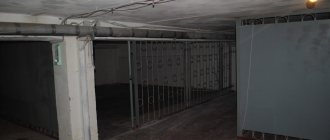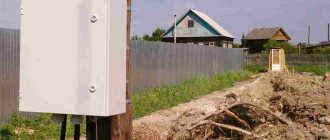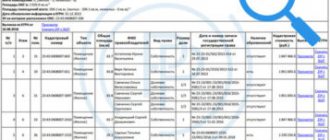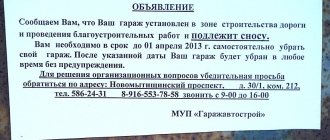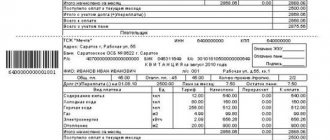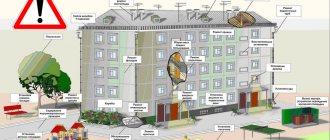Determination of the common property of an apartment building
Chapter 6 of the Housing Code of the Russian Federation, namely Article 36 of the Code, defines the types of property that are common to owners and persons living on the basis of agreements with the owner, including under a lease agreement. Such property is:
- special technical means and equipment of the house, which provide technical, sanitary, electrical and other supplies, stored outside the premises, or in them, serving more than one room within the house;
- staircases and landings, elevator shafts, fire escapes, elevators, technical floors and basements, attics, corridors and rooms providing access to them, as well as areas equipped with utilities, other equipment that serves the premises in this residential building;
- other premises within the house, which are not subject to the individual ownership rights of any of the residents, are freely accessible to people and are intended to provide leisure and recreation for children and adults, sports, cultural and physical development;
- the land on which the house is located, delineated by boundaries, with landscaping facilities, lawns, and green spaces located on it;
- other objects located within the plot of land owned by the house, objects intended for maintenance, repair, improvement and operation of the areas of the house owned by the owners.
Objects of ownership in an apartment building
Common property, as such, cannot be a separate object of ownership; in order to have the opportunities that the law has given to owners in relation to common property, it is necessary to own a dwelling that is part of an apartment building and own it. If these conditions are met, a citizen may demand the fulfillment of his rights regarding common property.
At the same time, the owner has responsibilities in relation to the common property for its repair, maintenance, and incurring expenses for repairs and maintenance of the house.
It is possible to reduce the size of the common property through complete or partial reconstruction of the house and exclusively with the consent of citizens who have premises in the given house on the right of ownership.
Based on the decision made at the meeting of home owners, it is possible to transfer the property for use to third parties. It should be noted that the procedure and organization of such a meeting must comply with the provisions of housing legislation, namely Chapter 6 of the Housing Code, regarding meetings of owners.
In a situation where the house is destroyed, the owners retain the inalienable right to their share of the land plot as part of the total area on which the house was located, as well as structures and elements intended for the maintenance and operation of the house.
Legislation
The main regulators of relationships in such houses are the Housing Code, the Civil Code and some legal acts:
- Thus, Article 36 in the first part of the Housing Code of the Russian Federation describes the share component of all owners of an apartment building and the composition of such property.
- Article 16 adds to this property the land plot under and next to the house, which was not previously included in the legislation. But this gives the co-owners the right to improve the given territory, improving it in every possible way.
- The common shared ownership of such holdings is also prescribed in Article 290 of the Civil Code of the Russian Federation.
- And also Article 3, paragraph 2 of the same document equalizes the norms of civil relations in terms of property within the boundaries of the same code.
- The Law “On Homeowners' Associations” - rules for the management, ownership and maintenance of this property. Government Decree No. 491 of 2006 contains a complete decoding of the entire set of rules for the use and maintenance of such houses by their owners.
Can a management organization dispose of common property?
The management organization does not have the right to dispose of the common property of the owners of premises in an apartment building, since in accordance with Art. 36 of the Housing Code of the Russian Federation, reducing the size of common property in an apartment building is possible only with the consent of all owners of premises in this building.
Articles on the topic (click to view)
- Official rating of lawyers and firms providing legal support for apartment purchase and sale transactions
- Federal Law 159 on the specifics of the alienation of real estate
- How to legally install vestibule doors on a staircase landing?
- The procedure for recognizing housing as unsafe, unfit for habitation and subject to demolition
- Conditions for privatization of the local area of low-rise apartment buildings
- Time frames for eliminating housing and communal services accidents: standards for malfunctions, accidents, breakdowns
- I am an orphan, I want to get married, will I get an apartment after completing my studies?
I. Common property in an apartment building: basic concepts
Considering that an apartment building is usually a complex technical organism, dividing all the property in it into common (that is, belonging to all owners at once) and private is quite problematic. In particular, some homeowners consider their intra-apartment communications or batteries, which are a single whole with the engineering of the entire house, to be common property in an apartment building.
Indeed, in the event of a plumbing break, troubles can arise not only for the individual owner, but also for the neighbors, and the same illegal dismantling of a battery in a separate apartment can cause damage to the entire house. However, the owner of a home in an apartment building is responsible not only for the maintenance of the common property, but also of his apartment, thus the second does not follow from the first.
Common property in an apartment building includes property that can be used by at least the owners of two apartments, as well as property intended for one owner, but located in common areas (for example, a mailbox located in the entrance or an intra-apartment meter if it is placed on the staircase cell).
At the same time, common property in an apartment building can also be located inside the owners’ apartments - for example, load-bearing walls. Below we present an approximate list of it - in order to avoid various misunderstandings on the subject of “mine or not mine”.
How are funds received from the use of the common property of the apartment building spent?
By decision of the general meeting, the owners of apartment buildings can use the funds received from the use of common property to:
- improvement of the common property and adjacent territory of the apartment building;
- carrying out repair work;
- to pay for housing and communal services.
The management organization cannot dispose of funds received from the use of the common property of the apartment building without a decision of the general meeting of homeowners.
Expert opinion
Makarov Igor Tarasovich
Legal consultant with 8 years of experience. Specialization: criminal law. Extensive experience in document examination.
Information on the use and maintenance of the common property of an apartment building is contained in Chapter 6 of the Housing Code of the Russian Federation, Decree of the Government of the Russian Federation of August 13, 2006 No. 491
Non-profit partnership “Foundation for Assistance to Local Government Reforms”, 2014
The importance of common property for owners of premises in an apartment building is great. Its proper functioning directly affects the comfortable existence of residents. The financial side is also important - the obligation to maintain joint property is based on the law.
The composition of the common property of a house is regulated by legal norms, and yet disputes regarding the attribution of a particular item or equipment to the joint property of all residents often arise. What are the signs of common property and the procedure for using it?
Volgograd
The owners of premises in an apartment building own, by right of common shared ownership, premises in this building that are not parts of apartments and are intended to serve more than one premises in this building, including inter-apartment landings, stairs, elevators, elevator and other shafts, corridors, technical floors, attics, basements in which there are engineering communications, other equipment serving more than one room in a given house (technical basements), as well as roofs enclosing load-bearing and non-load-bearing structures of a given house, mechanical, electrical, sanitary and other equipment located in this house outside or inside the premises and serving more than one room, the land plot on which this house is located, with elements of landscaping and landscaping and other objects intended for the maintenance, operation and improvement of this house, located on the specified land plot. The boundaries and size of the land plot on which the apartment building is located are determined in accordance with the requirements of land legislation and legislation on urban planning activities (Article 36 of the Housing Code of the Russian Federation).
Who bears the burden of maintaining the common property of an apartment building?
According to Article 39 of the Housing Code of the Russian Federation, the costs of maintaining common property in an apartment building are borne by the owners of premises in such a building. The share of mandatory expenses for the maintenance of common property in an apartment building, which are borne by the owner of the premises, is determined by the share in the right of common ownership of the common property in such a house of the specified owner.
The rules for the maintenance of common property in an apartment building, approved by Decree of the Government of the Russian Federation of August 13, 2006 No. 491, also establish that the owners of premises are obliged to bear the costs of maintaining the common property of the house in proportion to their shares in the right of common ownership of this property by paying:
- fees for the maintenance and repair of residential premises in an apartment building - in the case of management of an apartment building by a management organization or directly by the owners of the premises;
— obligatory payments and contributions of premises owners who are members of a homeowners’ association, housing, housing-construction cooperative or other specialized consumer cooperative. At the same time, owners of premises who are not members of these organizations pay a fee for the maintenance and repair of residential premises in accordance with Part 6 of Article 155 of the Housing Code of the Russian Federation.
What is a share in the right to common property in an apartment building?
According to Article 37 of the Housing Code of the Russian Federation, the share in the right of common ownership of common property in an apartment building of each owner of premises in a given building is proportional to the size of the total area of the premises owned by him, measured in square meters.
It should be noted that when purchasing premises in an apartment building, the acquirer receives a share in the right of common ownership of the common property in the apartment building. The terms of the agreement, by which the transfer of ownership of premises in an apartment building is not accompanied by the transfer of a share in the right of common ownership of common property in such a house, are void (Article 38 of the Housing Code of the Russian Federation).
Determining the size of the share in the right of common ownership of common property in an apartment building is essential. The amount of payments for the maintenance and repair of common property, as well as participation in voting at a general meeting, are determined in proportion to the share in the right of common ownership of the common property of an apartment building.
What is included in the total area of the apartment?
The total area of the apartment consists of the sum of the area of all its areas, including the area of auxiliary premises, namely: kitchen, bathroom, toilet, storage room, corridors, etc.), with the exception of balconies, loggias, verandas and terraces (Part 5 Article 15 of the Housing Code of the Russian Federation).
Is it possible to convert residential premises (apartment) into non-residential ones?
The transfer of residential premises to non-residential premises and non-residential premises to residential premises is permitted only taking into account compliance with the requirements of the Housing Code of the Russian Federation and legislation on urban planning activities. The procedure and conditions for such a transfer are determined by Articles 22-24 of the Housing Code of the Russian Federation. To transfer residential premises to non-residential premises or non-residential premises to residential premises, the owner of the relevant premises or a person authorized by him must, in the prescribed manner, contact the local government authorities at the location of the transferred premises.
Please note that Article 22 of the Housing Code of the Russian Federation establishes restrictions both for the transfer of residential premises to non-residential premises, and in the case of the transfer of non-residential premises to residential premises.
What is the difference between remodeling an apartment and remodeling it?
According to Article 25 of the Housing Code of the Russian Federation, redevelopment and reconstruction of residential premises are work that requires amendments to the technical passport.
So, for example, the reconstruction of residential premises may include: installation of household electric stoves instead of gas stoves or kitchen hearths, relocation of heating plumbing and gas appliances, installation and refurbishment of existing toilets, bathrooms, laying new or replacing existing inlet and outlet pipelines, electrical networks and devices for installing shower cabins, Jacuzzis, high-power washing machines and other new generation plumbing and household appliances.
Redevelopment of residential premises may include: moving and dismantling partitions, moving and installing doorways, disaggregating or enlarging multi-room apartments, installing additional kitchens and bathrooms, expanding living space due to auxiliary premises, eliminating dark kitchens and entrances to kitchens through apartments or living rooms premises, installation or refurbishment of existing vestibules.
It should be remembered that reconstruction or redevelopment only changes the characteristics of the apartment and does not entail the creation of a new property.
Reconstruction and redevelopment of residential buildings and apartments (rooms), leading to a violation of the strength or destruction of the load-bearing structures of the building, disruption of the operation of engineering systems and (or) equipment installed on it, deterioration of the safety and appearance of the facades, violation of fire safety devices, are not allowed.
Redevelopment of apartments (rooms), which worsens the operating and living conditions of all or individual citizens of the house or apartment, is also not allowed.
What are the consequences of unauthorized redevelopment or reconstruction?
It should be remembered that a person who has unauthorizedly rearranged and (or) redesigned a residential premises bears the responsibility provided for by the current legislation of the Russian Federation.
Thus, in accordance with Article 7.21 of the Code of Administrative Offenses of the Russian Federation, unauthorized refurbishment of residential premises entails a warning or the imposition of an administrative fine on citizens from ten to fifteen times the minimum wage (from 1000 to 1500 rubles), and for unauthorized refurbishment the administrative fine is from twenty to twenty-five minimum wage (from 2000 to 2500 rubles).
In addition, in accordance with the provisions of Article 29 of the Housing Code of the Russian Federation, the owner of a residential premises that was unauthorizedly rebuilt and (or) redesigned, or the tenant of such residential premises under a social tenancy agreement, is obliged to bring such residential premises to its previous condition within a reasonable time and in the manner required are established by local governments.
It should be noted that only on the basis of a court decision can residential premises be preserved in a rebuilt and (or) redesigned state, provided that this does not violate the rights and legitimate interests of citizens or does not create a threat to their life or health.
It should also be noted that if the relevant residential premises are not restored to their previous condition within the period established by the local government body, the court, at the request of the local government body, provided that the court does not make a decision to preserve the residential premises in a rebuilt and (or) redesigned state, makes a decision:
1) in relation to the owner of the sale of such residential premises at public auction with payment to the owner of the proceeds from the sale of such residential premises minus the costs of executing a court decision with the imposition on the new owner of such residential premises of the obligation to bring it to its previous condition;
2) in relation to the tenant of such residential premises under a social tenancy agreement, to terminate this agreement with the imposition on the owner of such residential premises, who was the lessor under the said agreement, of the obligation to bring such residential premises to its previous condition.
Is it possible to place offices and engage in business activities in the apartment?
Yes, it is allowed to use residential premises for professional activities or individual entrepreneurial activities by citizens legally residing there, but only if this does not violate the rights and legitimate interests of other citizens, as well as the requirements that the residential premises must meet. At the same time, it should be noted that residential premises are intended for the residence of citizens and the placement of industrial production in residential premises is not allowed.
The use of residential premises is carried out taking into account the rights and legitimate interests of citizens and neighbors living in this residential premises, fire safety requirements, sanitary and hygienic, environmental and other legal requirements, as well as in accordance with the rules for the use of residential premises approved by the government of the Russian Federation (Article 17 Housing Code of the Russian Federation).
Is it possible to change the boundaries of residential premises?
Yes, you can. The owner of a premises in an apartment building, when acquiring ownership of a premises adjacent to the premises in an apartment building owned by him, has the right to combine these premises into one premises in the manner established by Chapter 4 of the Housing Code of the Russian Federation.
At the same time, we draw your attention to the fact that the boundaries between adjacent premises can be changed or these premises can be divided into two or more premises without the consent of the owners of other premises if such changes or division do not entail changes in the boundaries of other premises, boundaries and the size of common property in an apartment building.
It should be noted that if the reconstruction, reorganization and (or) redevelopment of premises is impossible without the annexation of part of the common property in an apartment building, the consent of all owners of the premises in this apartment building must be obtained for such reconstruction, redevelopment and (or) redevelopment of premises ( Article 40 of the RF Housing Code).
How to determine what belongs to common property in a communal apartment?
The owners of rooms in a communal apartment own by right of common shared ownership the premises in this apartment used to service more than one room (Article 41 of the Housing Code of the Russian Federation).
Thus, the owner of an isolated living space in a communal apartment, along with the premises belonging to him, also owns a share in the ownership of the common property of the communal apartment. In a communal apartment, isolated residential premises are objects of ownership, which are subject to state registration in cases provided for by federal legislation. The common property in a communal apartment is in the common shared ownership of the owners of the rooms in this apartment. A communal apartment is not an object of ownership, since the object of ownership is the residential premises in it, and the rest, the common property, is in the common shared ownership of the owners of isolated living rooms. The share in the right of common ownership of the common property in a communal apartment for the owners of the rooms arises at the moment the ownership right to the rooms they purchased in the apartment arises.
Who will determine the procedure for using common property in an apartment building?
Article 44 of the Housing Code of the Russian Federation directly defines the list of issues within the competence of the general meeting of owners of premises in an apartment building. Moreover, this list is essentially closed, since despite the fact that not all issues of the specified competence are named in this list, others can only be provided for by the above-mentioned Code.
The Housing Code of the Russian Federation determines that the general meeting of owners of premises in an apartment building is the management body of the apartment building.
It should be noted that the competence of the general meeting of owners of premises in an apartment building includes not only making decisions on the transfer of common property in an apartment building for use, but also:
— making decisions on the reconstruction of an apartment building (including its expansion or superstructure), construction of outbuildings and other buildings, structures, structures, repair of common property in an apartment building;
— making decisions on the limits of use of the land plot on which the apartment building is located, including the introduction of restrictions on its use;
— choosing a method of managing an apartment building;
- other issues referred by this Code to the competence of the general meeting of owners of premises in an apartment building.
How to hold a general meeting of premises owners in an apartment building?
The procedure for holding a general meeting of owners of premises in an apartment building, adoption and execution of decisions of such a meeting, as well as voting at this meeting are established by Articles 45-48 of the Housing Code of the Russian Federation. It should be noted that compliance with the above procedure is of great importance, since if it is not observed, the decision of such a meeting may be challenged by interested parties in court and declared illegal. If necessary, in order to comply with the norms established by law, the owners of premises in an apartment building, when organizing and directly during the general meeting, should seek the services of a professional lawyer - an attorney.
Who exercises state control over the use and safety of residential premises?
In accordance with Article 20 of the Housing Code of the Russian Federation, state control over the use and safety of the housing stock, regardless of its form of ownership, as well as the compliance of residential premises and utilities with established requirements, is carried out by authorized executive authorities, both federal and those created at the level of a constituent entity of the Russian Federation.
It should be noted that on the territory of the Volgograd Region, control over the safety of residential premises is carried out by the State Housing Inspectorate of the Volgograd Region.
Is it possible to deprivatize an apartment?
Yes, you can. According to Article 20 of the Federal Law of December 29, 2006 N 189-FZ “On the Entry into Force of the Housing Code of the Russian Federation”, citizens who have privatized residential premises, which are their only place of permanent residence, have the right to transfer those belonging to them by right until March 1, 2010 property and free from obligations residential premises into state or municipal ownership, and the relevant executive authorities, local self-government bodies or persons authorized by them are obliged to take them into ownership and conclude social rental agreements for these residential premises with citizens and members of their families living in these residential premises premises, in the manner established by the legislation of the Russian Federation.
Do citizens need to insure their apartments?
In order to guarantee compensation for losses associated with loss (destruction) or damage to residential premises, citizens who own residential premises can voluntarily insure their apartments in accordance with current legislation (Article 21 of the Housing Code of the Russian Federation).
Determining the procedure for using common house resources
The procedure for using shared resources by residents is determined by housing and civil regulations. Owners own, use and dispose of common property within the limits established by law. Residents have the same scope of rights to operate it and, accordingly, responsibilities for its proper maintenance.
Common property can be reduced (through reconstruction) only with the consent of all its share owners. Common objects may be transferred to other persons for use by decision of the meeting of owners. The condition for the transfer is the absence of infringement of the rights and legitimate interests of other participants in civil legal relations.
For example, residents decided to rent out the basement, which is part of the common property of an apartment building, for trading. To make such a decision on the disposal of the basement, it will be necessary to convene a meeting of owners.
Subsequent use by tenants of the common property of an apartment building should not be to the detriment of the rights of the owners. Use of common property by third parties is permitted only with the consent of all owners.
If the apartment building is destroyed or demolished, the owners retain the right of common ownership of the land plot. The share in such common property is proportional to the share in common ownership of the property on the date of destruction (demolition).
How does the division of responsibility work?
The entire common property of an apartment building must be listed in the documents for a residential multi-storey building. These include:
- public housing documents;
- papers for functioning metering devices;
- acts of replacement and inspection of meters, equipment and communications;
- acceptance certificates for emergency, planned or major repairs;
- transfer deeds from the developer and other official documents.
Read also: Improving living conditions for large families in Russia
The exact list of documents may differ for each apartment building depending on the form of management.
The method of maintenance and repair of common property is regulated by Resolution No. 491, as well as the Housing Code. Usually, the procedure for payment for common use, repairs and provision of the needs of the common housing stock of an apartment building is determined jointly at a meeting, especially if the house is under the control of a HOA. For example, the issue of purchasing and installing metering devices is usually decided by residents themselves. Since house meters are collective property, the responsibilities for their acquisition and installation are performed by residents, who must contribute their share of the funds. This rule also applies to other types of equipment and devices that are collectively owned.
The maintenance of other collective property follows the same principle: if it is necessary to repair, replace or modernize any of the components of the common property, the contractor (service company or utility provider) determines the total cost of the work and distributes it among the residents.
What happens if you use property without consent?
Without the consent of the meeting, it is unlawful to use the common property of the owners of premises in an apartment building. The use of the common property of the owners of an apartment building is possible in compliance with the norms regulated by the Code of Housing Legal Relations.
The use of common shared property of residents of an apartment building in violation of legal norms may be considered illegal.
For example, the customer under an energy service contract should be the person responsible for the maintenance of a residential building, who has the right to enter into a contract only with the written consent of each owner. Otherwise, the contract will be declared void (based on the Energy Supply Law).
Who manages these resources?
How to structure the process of maintaining common property in accordance with the requirements? Who directly translates content activities into reality?
This is done by concluding an agreement (contract) with the management company. The general meeting of owners determines a suitable management company and, on the basis of the concluded agreement, powers of maintenance are delegated to it.
The management company, representing the owners, signs contracts with resource supply enterprises, with organizations carrying out repairs and house maintenance work. The company carries out activities determined by the meeting of owners.
Management of common property can be carried out through the formation of an HOA. The homeowners association solves maintenance problems in a similar way to the management company. Owners who are not included in the HOA enter into an agreement with the partnership on the maintenance and repair of the property. This control option is convenient for houses with a small number of apartments.
The method of management is established at the meeting. The decision of the meeting of owners is valid if there are two-thirds of the votes.
Formation and control of the fund of common funds of owners
The owners' cash fund is a special account where money is accumulated and allocated for major repairs of common property in an apartment building. The special account is replenished with monthly payments from the owners for major repairs, penalties, and bank interest.
The purpose of the account does not allow resources to be directed to needs other than major repairs.
The right to a special account belongs to the owners. The size of each share is proportional to the amount of payments for major repairs of all owners - the owners of each apartment. The allocation of a share of financial resources cannot be announced. When selling an apartment (premises), the buyer becomes the owner of part of the capital repair fund.
Equipment in common property
Equipment that is included in the common property in an apartment building is a broad category that includes machines, electrical components and assemblies that meet the needs of residents for the supply of basic resources, services and amenities:
- meters for water, light, heat consumption, installed at the expense of residents or the service company;
- intercoms and other warning and alarm systems;
- boilers, boilers to meet the needs of water supply and home heating systems located on the territory of the apartment building;
- electrical switchboard equipment, distribution cabinets.
This also includes other equipment that meets the needs of consumers of basic housing resources (water, electricity, heat, etc.)
Holding a general meeting of apartment owners
The general meeting of owners of premises in an apartment building is a governing body. The meeting is held through:
- personal presence of each owner of the residential premises;
- absentee voting;
- mixed form.
A meeting should be held annually (usually in the second quarter). The owner may initiate the convening of an extraordinary meeting. Such a meeting is valid if more than 50% of all owners are present. If the required number of participants is not present, the annual meeting is convened again.
Actions regarding common resources are implemented based on the results of voting by meeting participants: decisions are made by a majority of votes, certain issues require 2/3 votes or complete unanimity. The voting results are confirmed by protocols in accordance with established requirements.
Decisions, as well as protocols recording voting results, certify facts, the consequence of which may be a change in rights and obligations in relation to common property.
